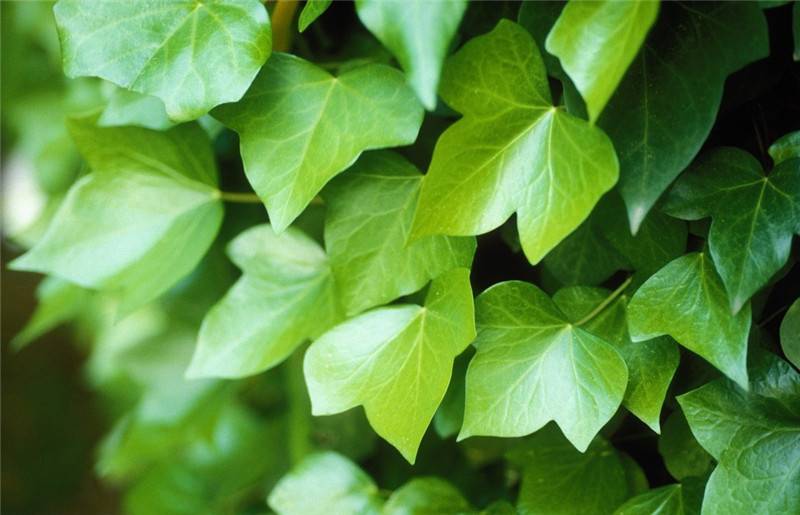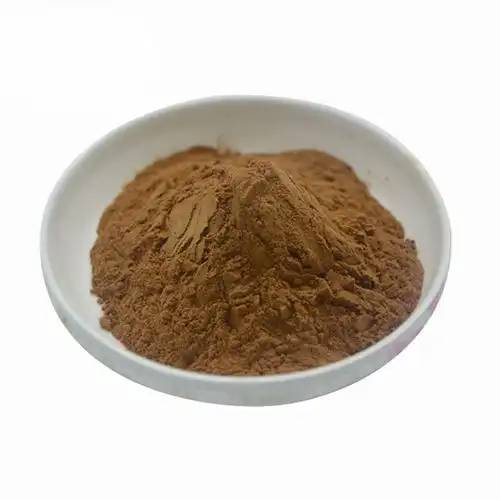Exploring the Potential of Ivy Leaf Extract Hederagenin in Functional Food Formulations
Green Spring Technology, as a leading provider of plant extract solutions, remains committed to identifying natural active ingredients with high application value....... Today, we are focusing on a key pentacyclic triterpenoid compound derived from multiple medicinal plants—Hederagenin (Ivy Saponin), whose significant health-promoting potential is inspiring new ideas for formulators in the food, beverage, and dietary supplement industries.
1. Wide Availability, Natural Advantages
Hederagenin is widely found in nature and is one of the active components of traditional medicinal plants such as Coptis chinensis, Lonicera japonica, Clematis armandii, Pulsatilla chinensis, and Schisandra chinensis. This ensures a stable supply as a sustainable raw material, aligning with the strong market demand for natural and plant-based ingredients.

2. Breaking Through Bottlenecks: Technological Advances in Enhancing Bioavailability
Although natural hederagenin faces solubility challenges, cutting-edge research has achieved significant breakthroughs.
Scientists have successfully developed a series of Hederagenin derivatives with significantly improved water solubility and enhanced bioavailability by innovatively modifying its molecular structure (primarily at the C-3, C-23, and C-28 positions) through chemical modifications such as esterification, amidation, succinylation, and the introduction of hydrophilic groups. These technical advancements open up new possibilities for exploring its application in various end-product formulations.
3. Hederagenin: A Natural Source of Innovative Functional Molecules Empowering Product Development Across Multiple Fields
Hederagenin, a naturally occurring pentacyclic triterpenoid compound, is widely distributed across multiple plant families, including the Apiaceae, Caprifoliaceae, and Araliaceae families, with abundant natural resources and excellent sustainable supply potential, providing a solid foundation for functional ingredient development.
In terms of application chemistry, the molecular structure of hederagenin contains multiple modifiable sites, including a hydroxyl group at the C-3 position, a double bond at the C-12/C-13 position, a hydroxyl group at the C-23 position, and a carboxyl group at the C-28 position. These active groups offer abundant possibilities for targeted chemical modification and derivative development, helping companies create more differentiated and high-value-added end products.
Currently, the development of derivatives based on this component is emerging as a new hotspot in the field of natural product applications, demonstrating broad prospects in industries such as cosmetics, functional foods, and plant-based formulations.
We will continue to monitor research progress and technological breakthroughs in this class of compounds, providing customers with stable and compliant raw material solutions to jointly advance product innovation and market commercialisation.
Significant progress has been made in the C-28 modification of Ivy Saponin, offering new opportunities for companies to develop innovative natural derivatives.
Research shows that through alkylation, amidation, and click chemistry, among other methods, structurally diverse and functionally distinct derivatives can be efficiently constructed at this position, significantly expanding their application potential in pharmaceuticals, cosmetics, and functional foods.
Green Spring Technology continues to focus on natural product modification research, providing clients with compliant, customizable raw material solutions to support product innovation and industrial upgrading.
4. Hederagenin (Ivy Saponin) Research Progress: The Application Potential of Natural Active Components Continues to Expand
Recent studies have shown that Hederagenin (Ivy Saponin) and its derivatives exhibit diverse biological activities in various biological models, providing scientific support for their application in functional raw materials.
In vitro experiments have shown that Hederagenin exhibits certain inhibitory activity against certain microorganisms (such as Enterococcus faecalis and Staphylococcus aureus) and has been observed to have potential effects in some parasitic models (such as Leishmania). Animal experiments also suggest that it may have regulatory potential in certain physiological processes. These preliminary findings provide valuable references for further research into Hederagenin as a functional ingredient.
It should be noted that current research is primarily based on cell or animal models and remains at the laboratory stage. The application of Hederagenin in actual food, beverage, or dietary supplement products requires customers to complete final product development, safety verification, and compliance claims in accordance with target market regulations.
Green Spring Technology's high-quality ivy extract (Hederagenin) ingredient: Providing scientific raw material support for functional product innovation
Green Spring Technology leverages its mature extraction and purification processes to offer high-purity, high-stability ivy extract (ivy saponins, Hederagenin), which boasts the following core advantages:
· High purity and compliance assurance: The product strictly complies with international standards, providing complete compliance documentation and COA to ensure seamless market access globally;
· Excellent Solubility and Stability: Through technical optimisation, we have significantly improved the physical properties of the raw material, making it suitable for various formulations such as solid beverages, tablets, capsules, and liquid formulations.
· Scientifically Backed with Clear Application Potential: Existing research indicates that Hederagenin has a unique structure and diverse biological activities, providing innovative directions for the development of functional foods, dietary supplements, and other products.
Green Spring Technology can provide customised raw material solutions, including solubility optimisation, stability treatment, and formulation integration support, helping your products stand out in the competitive market.
We welcome health product companies and R&D procurement experts to contact us at helen@greenspringbio.com or WhatsApp: +86 13649243917 for samples, technical information, and cooperation proposals. Partner with Green Spring Technology to empower your next-generation health products!
Références:
[1] Qi Shuai, Hu Hua. Dosage de l’acide oléanolique et du lupéol en phytothérapie de Clematis par HPLC-DAD-ELSD [J]. Journal de l’université pharmaceutique de Guangdong, 2010, 26(1): 67-69.
[2] Li Huijun, Li Ping. Détermination de la saponine de lierre et de l’acide oléanolique dans le chèvrefeuille à l’aide de HPLC-ELSD [J]. Journal of Pharmaceutical Analysis, 2006, 26(6): 820-822.
[3] Liu Y. Q., Xie Y., Peng Y. M., et al. Détermination de la lonicérine dans Lonicera japonica par HPLC [J]. Journal of Hunan University of Traditional Chinese Medicine, 2014, 34(3): 28-30.
[4] Li Caitang, Xie Huan, Zhang Di, et al. Détermination par HPLC de la teneur en saponines de lierre dans les matériaux à base de plantes de la racine de Luffa [J]. Chinese Journal of Experimental formules, 2013, 19(18): 145-147.
[5] Li Jufeng, Chen Jinfu, Tang Shaoli, et al. Détermination de la teneur en saponines de lierre dans différentes sources de Cynanchum atratum par HPLC [J]. New Chinese Drugs and Clinical Pharmacology, 2013, 24(6): 606-609.
[6] Tan Wuli, Li Min, Wu Shuyao. Détermination des saponines de lierre dans l’écorce de Cinnamomum cassia par HPLC [J]. Modern Chinese Medicine Research and Practice, 2011, 25(5): 68-70.
[7] Shi Rongmei, Geng Dongsheng, Li Xinhua. Détermination de la teneur en saponines de lierre et en acide oléanolique dans les graines de cumin noir par HPLC [J]. Journal de pharmacie du peuple chinois ' S Liberation Army, 2012, 28(3): 245-247.
[8] Wan Xin, Shi Jinli, Liu Yong, et al. Constituants chimiques et effets pharmacologiques des plantes du genre Patrinia [J]. Foreign Medicine: Journal of Herbal Medicine, 2006, 21 (2): 53-59.
[9] Zhang Qian. Étude sur les composants actifs de la racine de banane, de la fleur de banane et du châtaignier d’eau du lac sud [D]. Kaifeng: université du Henan, 2011.
[10] Guan Yingli, Liu Jianyu, Xu Yongnan. Progrès de la recherche sur les saponines triterpénoïdes et les activités biologiques des plantes Pulsatilla [J]. Journal de l’université pharmaceutique de Shenyang, 2009, 26 (1): 80-83.
[11] Zhu Jinduan, Yuan Dejun, Wu Xueru. Détermination de la teneur en lonicérine dans les herbes précurseurs de semences d’origines différentes [J]. Chinese Herbal Medicines, 2013, 36 (3): 426-427.
-
Précédent précédent
The Potential Application of Natural Ingredient Ivy Extract Hederagenin in Health Products
-
Suivant:
Etude sur les boissons au pissenlit


 Anglais
Anglais français
français espagnol
espagnol russe
russe coréen
coréen japonais
japonais




